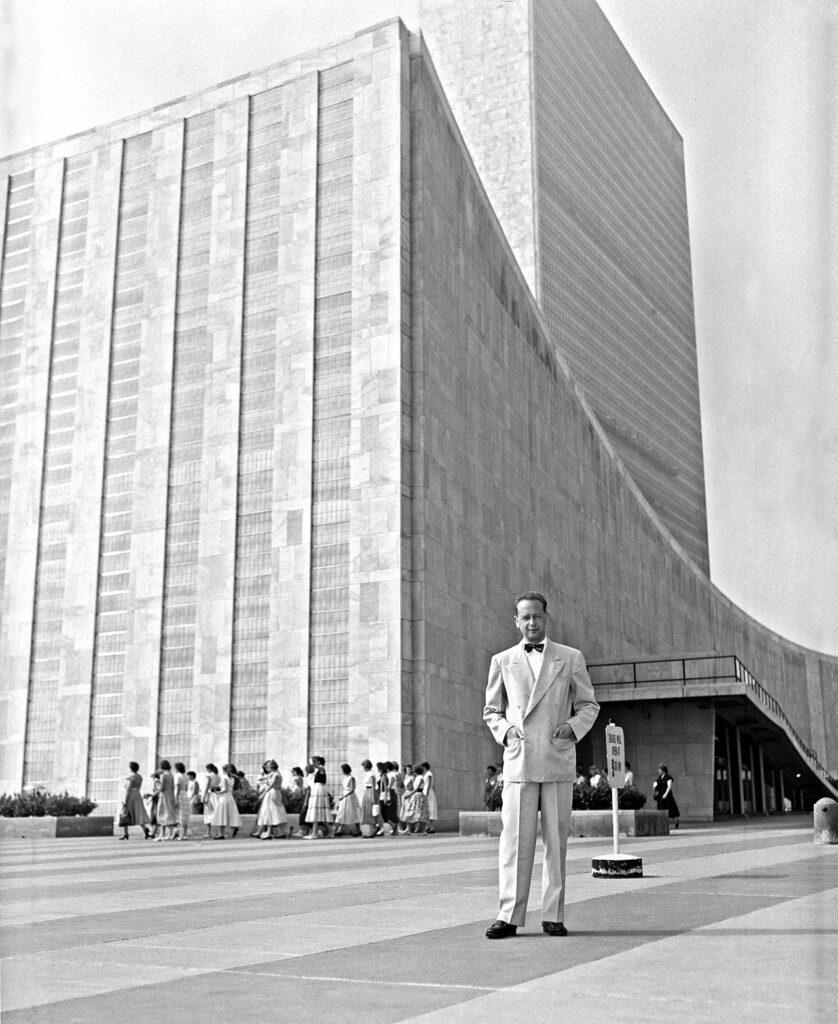High-profile events often seem to catalyze city-wide cleanup efforts to reduce blight, beautify urban decay, and remove illegal dumping. There is a lot of research on mega-events such as the Olympics and other sports events. However, sports events are not the only catalysts that bring attention to urban decay and blight: high-profile political meetings and city clean-up initiatives often go hand-in-hand. The recent Asia-Pacific Economic Cooperation (APEC) Summit in San Francisco in mid-November spotlighted the urban landscape and the targeted cleanup efforts. In this blog post, we evaluate political meetings & city clean-up initiatives in the context of travel and tourism. This is the first in our series to evaluate external catalysts to clean up municipalities.
Internal & External Drivers of City Clean-Up Initiatives
There are many reasons to reduce blight, eliminate urban decay, and beautify a city. Some reasons include:
- Repurpose or redevelop vacant lots
- Prepare for a big event
- Improve health outcomes related to the quality of living
- Increase environmental resilience
- Respond to a disaster or catastrophe
- Take advantage of funding opportunities
Each of these reasons is complex and involves many stakeholders and data to identify, prioritize, implement, and monitor. However, stakeholders can generally be categorized as internal or external to a municipality. An internal stakeholder is a resident, business, or local leader. External stakeholders are visitors and organizations that have a vested interest in the redevelopment, resilience, or beautification outcomes. As we saw from the press and media coverage of the highly anticipated meeting between US President Joe Biden and China’s President Xi Jinping, political summits, conferences and meetings shine a spotlight on the urban landscape of the host city. San Francisco is not alone in this type of attention. Cities hosting political gatherings such as protests and rallies, Democratic and Republican National Conventions, and global political meetings all receive attention regarding their clean-up initiatives.
High-Profile Political Meetings and City Clean-Up Initiatives
High-profile political meetings, such as the APEC Summit in San Francisco, are often portrayed to be the catalyst to clean up the host site’s landscape. Or does it seem that way because there is extra media attention on the blight reduction efforts leading up to the event?
These high-profile political events focus a global spotlight on the host city. The spotlight is not only on the political discussions and outcomes but also on the urban landscapes that host the occasions. Urban decay is a persistent issue in many cities, and as the eyes of the world turn towards them, the need for comprehensive cleanup efforts becomes more apparent.
The Impact of Urban Decay on Perceptions of a Host City
Urban decay is characterized by dilapidated infrastructure, neglected public spaces, encampments of unhoused populations, and illegal dumping and litter. Blighted and neglected infrastructure tarnishes a city’s image and reflects poorly on its ability to host major political events. A city’s physical appearance can influence the event’s perception, affecting the impressions of attendees, journalists, and global observers. To counteract this negative impact, proactive cleanup initiatives are regularly included in city-wide preparations in order to present a positive image to the world. For example, headlines leading up to San Fransisco’s APEC Summit included
- Before World Leaders Arrive, San Francisco Races to Clean Up – NY Times
- San Francisco bidding to reverse image of city in decline as host of APEC Summit – AP News
- San Francisco spruces up for APEC summit amid resident concerns over selective city clean-up – Fox 26
- San Francisco Mayor Defends APEC Cleanup Efforts – The San Francisco Standard
These headlines exemplify the attention and pressure host cities receive in hosting high-profile political events. Yet there is seemingly little research on the impact of an urban landscape on the political processes or outcomes. Despite the research gap, intuitively, anyone who has hosted a gathering knows the importance of the space & setting.
Positive perceptions of the host city can translate into favorable opinions of the political event itself, fostering a conducive atmosphere for constructive dialogue and collaboration. Conversely, cities grappling with urban decay may face challenges in projecting a positive image, potentially affecting the efficacy of the political discussion taking place. The pressures of these perceptions surround high-profile political meetings and city clean-up initiatives.
Competitive Selection of Host Cities
San Francisco was selected to host the 30th APEC Summit in November 2022. In a recent interview, the US State Department’s senior official for APEC, Matt Murray, told the San Francisco Chronicle about the competitive process. Murray stated, “[W]e were looking for the cities around the United States that we thought would be the best backdrops for what we were trying to do at each of the meetings…You want to find the place that you think is the perfect encapsulation of what you’re trying to promote on the policy side.” While Murray did not explicitly discuss urban decay, urban blight, or the efforts California is taking to clean up the city, his focus was still on the context the host provides for the meeting. The competitive selection process seemed to revolve around the alignment of the city’s offerings with the meeting’s agenda.
The selection for other political events such as the Democratic or Republican National Conventions is also highly competitive. Chicago won the bid to host the 2024 Democratic National Convention based on it’s central location with regards to battleground states, union labor advantage, hotel capacity and other logistics considerations. Similarly Milwaukee won the bid to host the 2024 Republican National Convention based on a united effort across party lines, avid support from the business community, and logistical considerations of accommodations and security. Both Chicago and Milwaukee started their competitive bid process over a year before the selections were officially made.
California’s Clean Up Efforts
Governor Gavin Newsom’s Clean California initiative was launched in July 2021, 16 months before San Francisco was selected as the host for the APEC Summit. Given the long and competitive bid process for hosting political events, it is likely that the Clean California initiative was started around the same time California put its hat in the ring to host the APEC Summit.
Clean California is administered by the California Department of Transportation (Caltrans). In 2020, Caltrans removed 267,000 cubic yards of trash from the state highway system. The following year, the Clean California initiative was launched. With the Clean California initiative, Caltrans expects to remove 1.2 million cubic yards (21,000 tons) of trash illegally dumped along roadways and highways. While we love California’s focus and resource allocation to Clean California, unfortunately, the website’s dashboard does not have data on the progress of litter collection.
Looking to build a dashboard to demonstrate your city’s ongoing beautification efforts? Check out how City Detect’s AI-powered, near-realtime data, and urban blight reports can make it possible.
Looking back at news reports prior to the launch of Clean California, Caltrans officials consistently blame the COVID-19 pandemic and shelter-in-place orders. However, one news investigation found that some segments of highways had not received attention for several years before the pandemic, throwing doubt on the pandemic as the root cause of the worsening issue. Additionally, nearly all media coverage mentions homeless encampments, a well-known and complex issue continuing to impact San Francisco’s urban landscape.
Clean California Initiative

Clean California, key for San Francisco’s pre-APEC cleanup, includes community days, grants, partnerships, adopt-a-highway, and state beautification.The program budget is $1.2 billion, which is divided into several project budgets:
- $418M: Litter Abatement over three years
- $287M: State Beautification Projects over two years
- $400M: Local Beautification Projects through 2026
- $32M: Public Education over two years
- $62M: Project Design, Construction, Local Support and Engagement
The initiative’s website includes resources to help engage and inform the community. While the community gallery shows the outstanding community efforts, there is little data on the actual progress of the initiative.
Political Tourism as a Driver for Development
California is not alone in the alignment of high-profile political meetings and city clean-up initiatives. Hosting major political events often translates into increased tourism and business opportunities thereby generating revenue for the city. A well-maintained city is more likely to attract visitors who are not only attending political events but also exploring the city and contributing to the local economy. Clean streets and public spaces enhance the overall visitor experience.
Globally, tourism is the 10th largest industry and generated $2 trillion in 2022. Naturally, an industry this large attracts substantial academic and regulatory attention. Despite this attention, there is little agreement on even the basic definitions and categories of tourism. For example, the UN World Travel and Tourism Organization includes all professional related travel in the Business Tourism category in some documents. However, in other settings travel for political purposes is categorized as “group meetings & conference travel.” A 2018 literature review of tourism-related research papers found that well over 400 peer-reviewed articles focus on the relationship between tourism and economic impacts. Yet, despite the emphasis on economic impacts, data on political meeting-related tourism lacks consistency and thorough collection. More academic research is needed in this area.
Despite the lack of academic attention, let’s look at some of the high-profile political meetings and their economic outcomes.
Case Study: The United Nations HQ in New York

The United Nations in NY epitomizes high-profile political meetings and city clean-up initiatives. There is a good reason for keeping the UN headquarters beautiful. In 2014, hosting the United Nations had a $3.69 billion economic impact on New York City, according to this report. The UN is a huge organization, including its Agencies and Affiliates and the Permanent Missions and Observers of the UN. The organization contributes thousands of jobs, events, sales of goods and services, property rental, and more.
Yet Manhattan was not even an early contender for the UN. John D. Rockefeller’s $8.5 million offer to purchase the UN’s site sealed the deal. The site the United Nations chose was a rundown area of slaughterhouses, light industry, and a railroad barge landing. The site was redesigned and redeveloped by a team of international architects. “The tallest of the group, consists of 39 stories above ground and three stories underground. The exterior facings of the 550-foot tall Secretariat Building are made exclusively of aluminum, glass and marble. Wide areas of green-tinted glass are unbroken by conventional setbacks. In contrast, the windowless north and south facades of the building are faced with 2,000 tons of Vermont marble.”1
APEC Summit, March for Israel, and National Conventions
More recent and upcoming examples of the economic impact of political tourism include the APEC Summit, March for Israel, and upcoming Republican and Democratic National Conventions.
- The APEC Summit brought an estimated 20,000 visitors from 21 countries to San Francisco and had an estimated economic impact of $53 million.
- The March for Israel in Washington DC on 12 November this year attracted an estimated 100,000 visitors from across the US.
- The 2024 Republican National Convention in Milwaukee is estimated to bring 50,000 visitors and $200 million economic impact.
- The 2024 Democratic National Convention in Chicago is estimated to bring 50,000 visitors and generate $200 million in economic impact.
- Houston, TX is bidding to host the 2028 Republican National Convention, estimating a $230 million impact.
Some research suggests the economic impact of National Conventions may be overestimated. We do find it interesting that the RNC and DNC use the same numbers for their 2024 conventions. Leveraging a data-driven approach to evaluating & prioritizing urban revitalization projects can help stakeholder alignment leading up to these critical events. Aside from the accuracy of the financial projections, the hype around these large political tourism events is real, as are the cleanup efforts. For example, Milwaukee’s 2024 budget proposal leverages ARPA funds for its Big Clean MKE Program, targeted demolitions, and code enforcement grants.
Looking for funding to clean up your city? Check out our earlier posts on using ARPA funds and other federal grant programs to redevelop, build resilience, and beautify your city.
Conclusion
Tourism, particularly political tourism, emerges as a significant economic driver motivating cities to combat illegal dumping and urban decay. Recent high-profile events, like San Francisco’s APEC Summit, are pivotal, capturing global attention and prompting focused cleanup initiatives. Urban decay’s undeniable impact on a host city emerges during events, shaping global perception and potentially influencing political outcomes. City selection competition highlights urban importance, urging substantial cleanup investments, seen in initiatives like Governor Newsom’s $1.2 billion Clean California.
Despite the clear economic benefits of political tourism, academic research on its relationship with urban redevelopment remains limited. However, specific examples, such as the United Nations and APEC, illustrate substantial economic gains associated with hosting international events. In the broader context of evaluating and prioritizing urban revitalization projects, a data-driven approach becomes crucial. Technologies like City Detect’s AI-powered, near-realtime data, and urban blight reports offer valuable tools for stakeholders to align efforts effectively. Cities vie for major political events, emphasizing that ongoing cleanup is integral to urban planning and development.
- https://www.un.org/sites/un2.un.org/files/english_2019.pdf ↩︎
